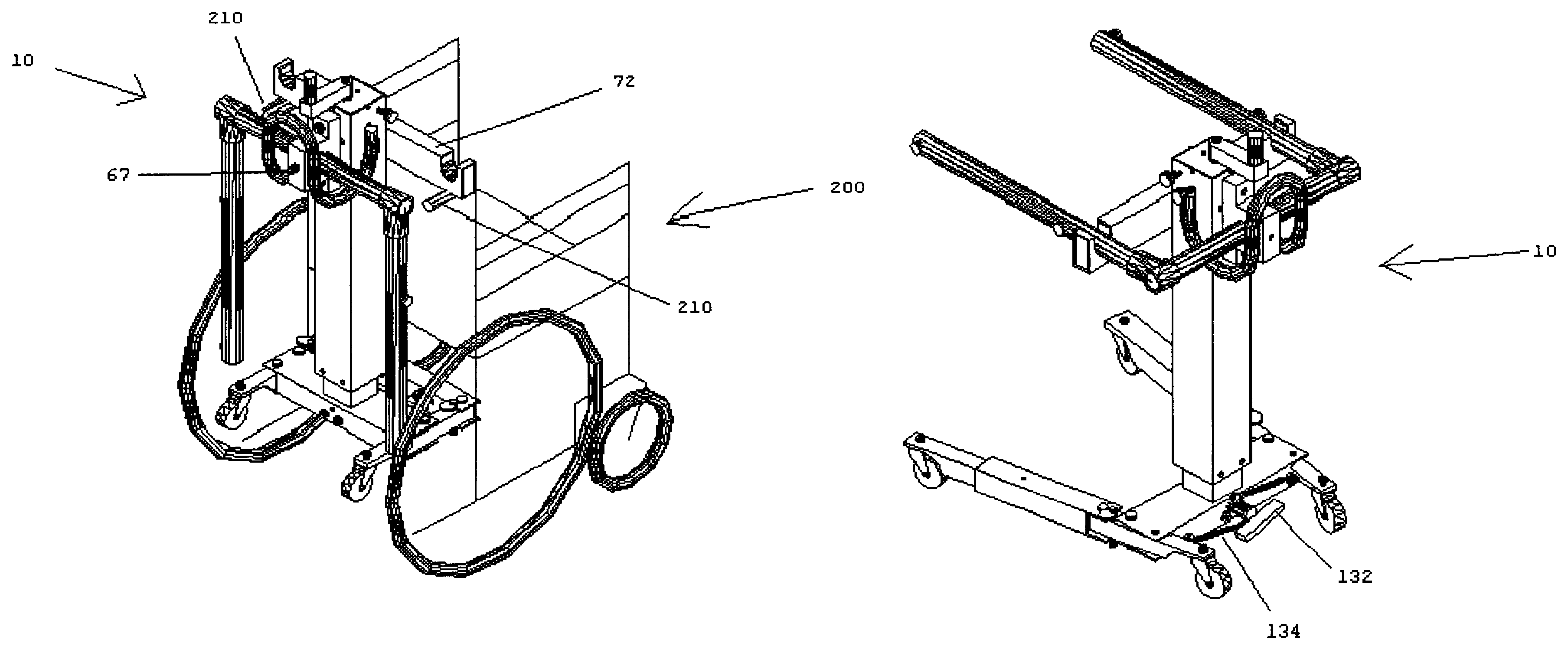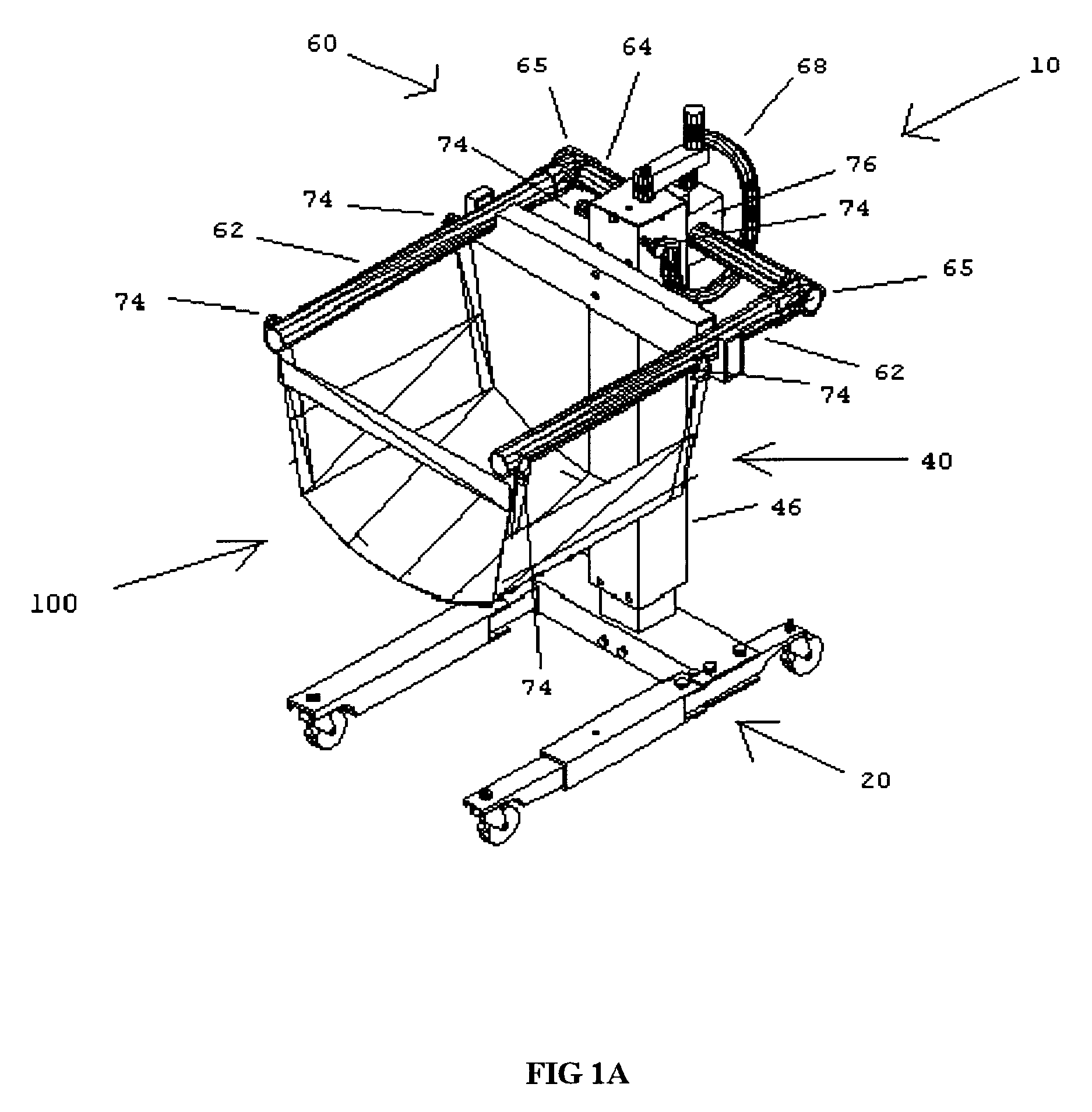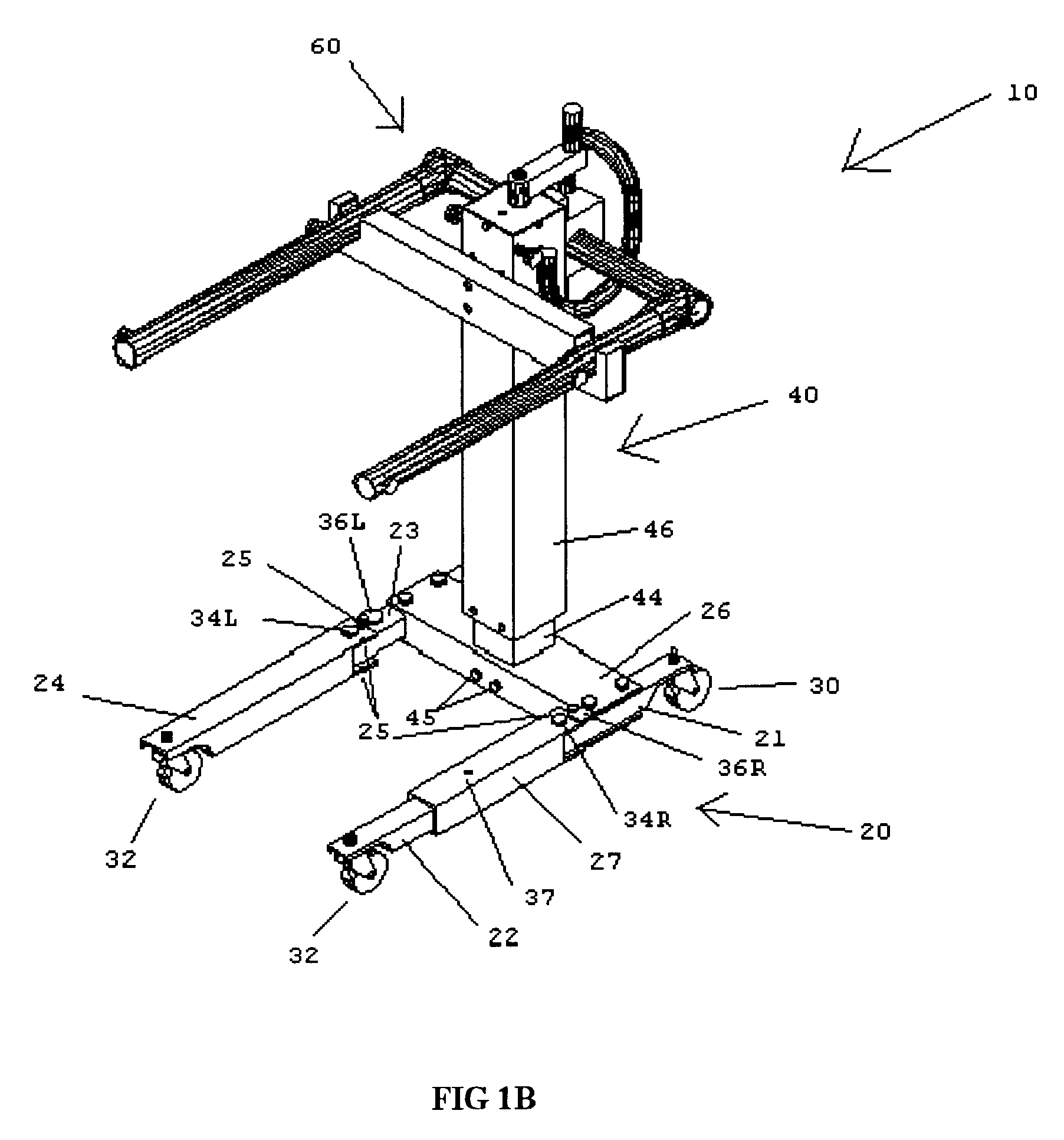Transferring of disabled patients is a leading cause of injury in the health-care industry, with the
nursing occupation having among the highest incidence of
back injury, despite the prior art and the availability of commercial patient lifts.
These lifts are under-utilized for a number of reasons, such as restricted space in many hospital wards and bathrooms, cumbersome operating requirements, the indignity involved in the
mode of transport, the additional time required for performing the transfer, and the
unavailability of the lift at both the patient's starting and destination locations.
The problem is pervasive in the home health care industry as well, where spaces are not designed for safe
patient transfers, and the caregiver is often alone and has no help during lifts.
In addition, many patients are essentially home-bound due to the
unavailability of a conveniently portable lift, reducing their
quality of life unnecessarily.
While this field contains considerable prior art, these devices have proven inadequate.
While effective, these are limited to use in very well defined areas.
A major
disadvantage of this design is that the patients are essentially suspended from a hook.
The
resultant swaying motion during transfer is disconcerting to most patients.
In addition, the patient is transported in a partially reclined position, increasing their sense of helplessness and indignity, particularly if used outside in public.
The rigid seat presents a difficulty in terms of initially placing the seat under the patient.
Here again, the base must be relatively wide in order to avoid tipping as the column is rotated, and there is no means for compactly transporting or storing the lift.
This increases the time and training required to use the lift.
However, this lift cannot be rolled once the patient is raised, since the jack is then resting on the floor.
The two-wheel design of this lift would be too unstable to safely support a patient, however.
A limitation of this design is that the patient's weight is supported under the arms, which tends to be unnatural and uncomfortable and requires a significant amount of shoulder strength.
It is therefore appropriate for a relatively small percentage of patients, and is also relatively expensive.
This design results in an undignified transfer position, and is fairly limited in terms of the difference in height between initial and final surfaces.
It also results in part of the weight being carried on the patient's chest, making it inappropriate for patients with
breathing difficulty, who use ventilators or who wear
cervical spine stabilization devices.
The range of transfer surface heights is relatively limited since the patients feet cannot leave the
floor level.
They all require that a patient be strapped into the device, a somewhat undignified posture when used in public.
In addition, they all require that the patient's knees be bent 90 degrees, making it unsuitable for amputees, individuals with
arthritis or leg injuries, a large proportion of the individuals who would be in need of assistance.
In addition, none of the previously mentioned patents adequately address the issue of portability.
In addition, the individual pieces are relatively large and cumbersome.
Even when folded, however, this lift is quite large due to its overhead boom design, and certainly not readily transportable.
In addition, the method of folding the legs vertically, in the direction of the applied load, represents a potentially dangerous failure mode should the highly loaded
locking mechanism fail while transferring a patient.
The folding mechanism is relatively complex, however, and it is not useful for transferring patients to wheelchairs or cars.
However, their lift is too heavy to be lifted by most individuals, and it cannot be transported on the back of a
wheelchair.
As noted above, the method of folding the legs vertically presents a potential safety problem should the legs not properly lock during use.
In addition, the requirement for two parallel drives make it inherently expensive, heavy, and non-portable.
However, the device suspends the patient from a hook, with the attendant swaying problems noted above.
In addition, the lift can only roll freely when fully open, since the wheels will only pivot freely when the
caster's swing axis is perpendicular to the floor.
None of the previous patents address the problem of insuring that a lift is available at both the patient's starting and final locations.
This approach suffers from the limitations of being relatively complex and expensive, and requires modification of the
wheelchair.
It does not provide for
patient support during transfer to the stool, however, and can not be used to transfer between different height surfaces.
 Login to View More
Login to View More  Login to View More
Login to View More 


